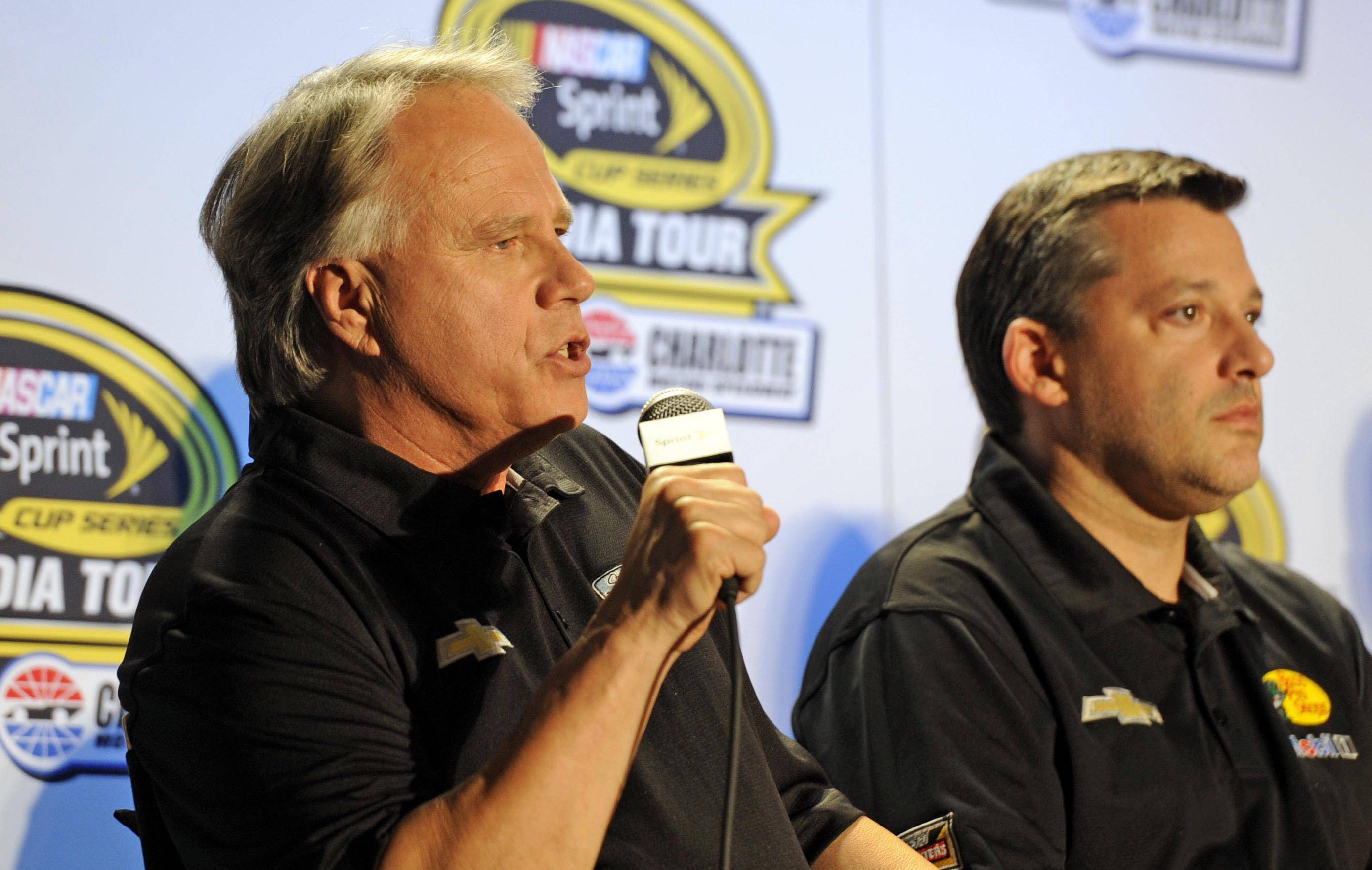
Few stories in NASCAR are as short-lived as Stewart-Haas Racing. When Gene Haas founded Haas CNC Racing, he invited Tony Stewart to co-own the team in 2009, and from that point on, it quickly rose to prominence.
They went from strength to strength right from their inception, expanding their operations from four cars to having some really big-name drivers behind the wheel, major sponsorships, and were well on their way to becoming one of NASCAR’s elite. But things went downhill rather quickly from that point on.
Instead, forcing the team to cease operations in 2024. But what exactly went wrong is the question. Did the charter era fail Stewart-Haas Racing, or was it the other way around?
ADVERTISEMENT
Article continues below this ad
Here’s the anatomy of SHR’s decline
Stewart-Haas Racing became a serious force to be reckoned with in the early 2010s. Even after Kevin Harvick won the championship, the team remained competitive, and the racer even finished third in 2017 and 2018. But the cracks began to show by that point, as wins were less frequent and consistency began to noticeably drop.
ADVERTISEMENT
Article continues below this ad
This further caused a domino effect, as key sponsors like Anheuser-Busch and Smithfield left, stretching the team’s finances. And, as a result, both Gene Haas and Tony Stewart were forced to cut costs.
Another major blow was Kevin Harvick’s retirement in 2023, as his experience and skill were needed to offset the equipment being provided by Stewart-Haas Racing. Regardless, Chase Briscoe, Josh Berry, Noah Gragson, and Ryan Preece showed plenty of promise, but they struggled to finish consistently high under challenging circumstances, which just added to the team’s problems.
And, just like that, Tony Stewart, who was once very hands-on in terms of being involved with the team, took a step back, focusing more on his NHRA drag-racing team and other business ventures.
Gene Haas, however, stayed back, but he too had other priorities, as his CNC manufacturing business and Formula 1 team took center stage. Ford’s support for Stewart-Haas Racing also reduced, making it even more difficult for SHR to remain competitive.
Hence, the struggles and the lack of sponsorship support proved to be the final nail in the coffin, and the co-owners admitted in their closing announcement that the “commitment needed to extract maximum performance while providing sustainability is incredibly demanding.”
The charter system under the microscope
The charter system was introduced back in 2016 to provide financial stability to teams as NASCAR wanted more investment in the sport and allowed teams to build longer-term value, so that fewer stakeholders dropped out in the long run.
But this change increased the stakes. As the sport began rapidly expanding, the charters became expensive assets, and the cost of entry to acquire a charter rose rapidly.
Now, new teams like 23XI Racing and Spire Motorsports have come into the picture and have the financial prowess to buy out some of the older operations in the Cup Series. And, from the get-go, some industry experts had predicted that some team owners would benefit more from simply cashing in by selling their charters than attempting to compete under the circumstances.
That’s exactly what happened, as in 2023, Spire Motorsports spent a staggering $40 million on a charter from Live Fast Motorsports, allowing the team to expand to a three-car operation for a record price. But for Stewart-Haas Racing, this proved to be an example they couldn’t turn a blind eye to.
With four charters and difficult circumstances, the decision had already been made. The team was already losing sponsors and finding it difficult to remain competitive in the Next-Gen landscape, especially with the technological, aerodynamic, and engineering demands.
Tony Stewart and Gene Haas sold their charters. In a way, the charter system didn’t force Stewart-Haas Racing to cease operations; it simply provided an alternative exit strategy that the team owners could fall back on.
Stewart-Haas Racing’s collapse reveals a bigger secret
If Stewart-Haas Racing’s collapse is anything to go by, it proves that while the charter system promised ‘stability,’ it doesn’t guarantee security. Even legacy teams with championships and a strong brand can collapse if multiple aspects of the organization are weakened simultaneously.
And, not to mention, the sport heavily depends on sponsorships and investment to maintain high performance, aspects that are volatile in nature in an industry that is perpetually in transition.
It also proves the dysfunctionality of business models. Some teams that have diversified income streams, strong manufacturer backing, and deep ownership involvement find it easier to deal with setbacks than teams that depend heavily on sponsorships.
Rodney Childers, who spent years atop the pitbox during Kevin Harvick’s reign, didn’t mince his words, saying, “They had a lot of structure and all those different things, but Stewart-Haas Racing was just a bunch of racers, and we just worked our guts out. And with the new car, you can’t do that. You really can’t just outwork somebody. I mean, you have to have all the pieces and parts and the details figured out, and every single piece and part has got to be pushed to the limit, and some people are able to do that.”
Chase Briscoe said, “Stewart-Haas has been home to my family and I for the last 7 years, and at the end of the year myself and the entire organization will be looking for a new home and new opportunities in the Cup series.”
Now, with the valuation of charters skyrocketing every season, it continues to be an entry barrier for potential newcomers or some of the smaller teams.
ADVERTISEMENT
Article continues below this ad
But was this inevitable?
It does look like it was bound to happen. Sponsors decided to pull away. The team is without financial resources. Clearly, Gene Haas and Tony Stewart had limited involvement in day-to-day operations, and the charter value simply gave them an incentive to close the curtains on what was once considered a legacy team.
However, Stewart-Haas Racing could have reorganized, scaled down its operations, restructured, and changed its sponsorship model. The solutions were always there, but selling their charters for millions, especially after their dwindling interest in NASCAR, would have been a more attractive option for Haas and Stewart.



